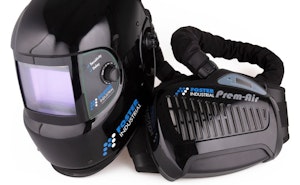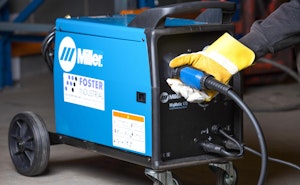Get in touch
Choosing A MIG Welder
Choosing A MIG welder
Purchasing a MIG welder that is suitable for your application and yet fits your budget, without compromising on quality can be a tricky process.
We’ve pulled together a guide of features & pitfalls to look out for when you’re buying a MIG set and put you in know when it comes to terminology & questions to ask the dealer

Fan on demand, PCB's, burn back, gas purge & wire inch
Fan on Demand : This feature lowers running costs and reduces contamination to internal components. The fan kicks in when its needed, rather than running all day.
Printed Circuit Board Protection; If the Machines PCB's are protected from dust & kept away from the fan, reliability will increase. Some manufacturers have the parts that need cooling in a duct type housing & the PCB isolated separately.
MIG wire inch button; Saves wasting your shielding gas when feeding wire through at the start of a new reel.
Gas Purge button; Another nice option. Save yourself some MIG wire, when you're setting your gas flow.
Burn Back; Not all machines have this externally, but it is good to be able to trim the burn back to the wire according to the application & operator.

Set up, Drive blocks, Budget, polarity & Duty Cycle
Easy Control Panel; Simplicity is key as it makes the process more straightforward.
Drive Block Systems; Four roll would always be first choice, but some of the lower amperage machines won't have them, meaning two roll would be more acceptable.
Budget; How much welding are you going to undertake? Gear your purchasing decision around jobs you'll do most.
Polarity Changeover; A lot of welders at the light industrial end will be able to weld with gasless flux cored MIG wire. Is the switch over easy on the machine you're considering?
Duty Cycle Testing; MIGS tested at 20 degrees & 40 degrees we consider good. Beware any manufacturer who doesn't quote an ambient temperature for testing duty cycles.

Meters, amperage, warranty & weld condition.
Digital Meters Factory Fitting; Great to have when you purchase and may be required for calibration requirements. To fit them retrospectively could be costly.
Availability of spares/after sales service ; Ask where the machine is manufactured. Even recognized brands outsource their production, which can lead to quality and after sales issues with a lack of continuity around supply for spares.
Selecting the correct amperage machine; Generally, you should work on 35-40 amps per 1.0 mm diameter of material to be welded.
Manufacturers Warranty; This is a great guide to quality. A three year warranty is good cover, five years exceptional. Be sure to return your registration.
Weld Characteristics; Make sure the arc is smooth and that it is suitable to your choice of application.

Rollers, trolleys, Synergic pulse inverter tech
Duty Cycle; Light industrial machine duty cycles can be as low as 20% but heavier ones should range between 40-60%. However a 300amp MIG with a 30% duty cycle is acceptable.
Drive Rollers; Metal rollers are the best, nylon and plastic ones will always wear quicker. Choose the groove of the roller according to material wire you running.
Bottle Trolley; If you want a MIG to be portable, you'll need one. If you have a full size cylinder, check that the running gear is sturdy enough.
Inverters; All inverters are step less and so have infinite control. With traditional stepped voltage machines no longer manufactured, inverters also offer power saving.
Synergic; Synergic MIG's have the edge when your welding stainless & aluminium as they are pre-programmed & easy to set up.
Pulse MIG; Pulse MIG reduces heat input & lowers spatter. A must for stainless & aluminium.

Shop Mig Welding
Shop Featured Equipment










